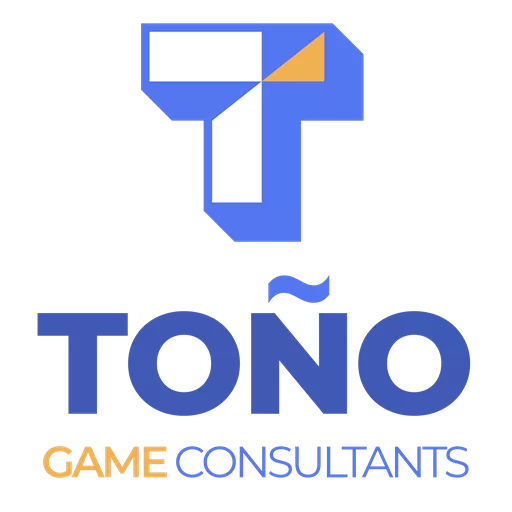Game development always begins with ideas. Prototypes let you test those ideas, playtesting reveals what works, and iteration shapes your vision into something people can understand and enjoy. But eventually, you reach a critical moment: moving from experiments to execution.
That’s where story mapping comes in. Story mapping is the glue that ties your early work together and sets the stage for your vertical slice or the start of production. It transforms the question “What do we want to build?” into “How do we actually make it happen?”
From Prototype to Stories
In the paper prototype of Dave the Diver, we weren’t building the full gameloop yet. Instead, we were testing fundamentals: how to move, how to dive, and how to attack. Even with placeholder art (a circle for Dave, basic shapes for fish) the goal was to see if players understood the controls and challenges.
Each of these mechanics can then be expressed as a story in the who / what / why format:
-
As a player, I want to move freely, so I can explore the ocean.
-
As a player, I want to dive deeper, so I can reach new areas.
-
As a player, I want to attack with a basic tool, so I can overcome obstacles.
These aren’t design notes — they’re actionable user stories. They make it clear who benefits, what action they’re taking, and why it matters. And that clarity allows programmers, artists, and designers to start producing the pieces needed for a vertical slice.
Once these basics are mapped, you can expand into the broader gameloop, for example, diving, catching fish, and preparing meals. But it starts with turning the core mechanics from your prototype into stories the team can act on.
Story Mapping as the Glue
Story mapping doesn’t replace creativity, it organizes it. You’ve validated fun mechanics through playtesting, but story mapping lays out how those mechanics connect into a player journey.
It also introduces priorities. Some stories are essential to the experience, while others can wait. Movement and diving might come first, while advanced menu systems or rare fish recipes can be pushed later. This creates a development roadmap, not just a wishlist.
👉 Want help prioritizing which stories matter most? Try our Prioritization Tool.
From Story Map to Vertical Slice
A vertical slice isn’t just a polished demo, it’s a proof of experience. It shows how the pieces of your story map fit together into something tangible, with enough quality to represent your vision.
Without a story map, a vertical slice risks being a random set of features. With a story map, the slice reflects the experience you’re selling. It’s not just “we built movement and some art,” it’s “we built the loop of diving, catching, and serving, and here’s why it’s engaging.”
For teams, this transition is crucial. Programmers know which systems to prioritize, artists know which assets to produce first, and designers can test the loop in its intended form. The result is a vertical slice that communicates both creative ambition and production discipline.
Entering Production
Story mapping doesn’t end once the vertical slice is built. It becomes the entry point into production, where the same stories expand into a full backlog and roll up into milestones.
Milestones aren’t just clusters of small tasks, they’re major phases of development that set the tone for what the team will achieve over months of work. For smaller projects lasting around a year, typical milestones might look like this:
-
Alpha: Core systems and mechanics are in place. Some features may still be rough, and many assets are placeholders. The focus is on functionality.
-
Feature Complete: All planned features are implemented. Several placeholder assets may still be present, but the game is playable end-to-end.
-
Game Complete: The game is fully playable with final assets in place. No placeholders remain, and the focus shifts to polish, performance, and content balance.
This framing keeps milestones aligned with player experience and production clarity: they’re not just internal checkboxes, but visible markers of progress that show how far the game is from launch.
Connecting the Dots
By this point, we’ve covered a lot of ground across the series:
-
prototype → test your ideas.
-
playtesting → validate fun, not QA.
-
gameloop → define the cycle of actions and rewards.
-
story mapping → turn mechanics into structured journeys.
-
vertical slice → prove your experience in polished form.
Story mapping sits at the center of this web. It’s the discipline that takes scattered insights and organizes them into a path forward.
Closing Reflection
Game development is never short on creativity — the challenge is aligning that creativity into something buildable, testable, and fundable. Story mapping is the tool that makes this possible. It bridges the gap between prototypes that spark excitement and production milestones that deliver results.
If you need help shaping your backlog, prioritizing features, or preparing for your vertical slice, I can help. As a Product Owner with 17 years in software and 11 in games, I specialize in translating creative vision into actionable development roadmaps.
👉 Book a time with me on Calendly, we’ll map your vertical slice and set realistic milestones.
FAQ: From Prototype to Story Mapping and Production
1. Why is story mapping important after prototyping?
Because prototypes test if something is fun, but they don’t show how to build the whole game. Story mapping organizes the mechanics you discovered into actionable stories that programmers, artists, and designers can deliver on. It’s the bridge between creative discovery and structured production.
2. How does story mapping connect to a vertical slice?
A vertical slice isn’t just a feature demo, it’s a proof of the core game experience at production quality. Story mapping helps decide which stories belong in the slice. Without it, your slice risks being disconnected features; with it, you show the real experience you’re trying to sell.
3. What’s the difference between prototyping and story mapping?
Prototyping is about exploration, trying different mechanics, inputs, and ideas quickly. Story mapping is about structure, taking the parts that worked and laying them out in a flow the team can build on. Prototyping is discovery; story mapping is direction.
4. Where does the gameloop fit in?
Your gameloop defines the core cycle players repeat, like dive → catch → cook. Prototyping helps you validate each step; story mapping breaks those steps into user stories; and your vertical slice shows that loop in polished form.
5. Are milestones just big user stories?
No. Milestones represent major phases of development (like Alpha, Feature Complete, Game Complete), usually spanning months. User stories roll up into epics, and epics roll into milestones. Milestones set the tone of what the team will achieve, not just what tasks to check off.
6. How do AA/AAA studios benefit from story mapping?
Even large studios often struggle with messy backlogs. Story mapping keeps features tied to player experience instead of random requests. It also makes it easier for producers and tech leads to set priorities and explain progress to stakeholders.
7. When should story mapping happen?
Ideally, once a prototype has been validated through playtesting. At that point, you know the experience you’re aiming to sell, and story mapping helps translate it into a backlog that can lead to production and a vertical slice.
8. Do we stop prototyping once we move into production?
No, you never really stop prototyping. What changes is how you prototype. Early on, it might be paper tests or quick digital builds. Once the game is working, you can test new mechanics, variations of systems, or different level designs.
The goal isn’t to declare features final, it’s to validate whether ideas are feasible and fit the context of your game. By prototyping throughout development (up until feature complete), you can fail fast and avoid wasting resources on art, music, SFX, or VFX for mechanics that won’t work.
Prototyping across the whole development cycle saves time, reduces risk, and keeps the team focused on features that deliver real value to players.
9. Does everything we create during development make it into the final game?
Not necessarily, and that’s okay. Just because something exists doesn’t mean it belongs in the finished product. One of my mentors once built around 120 levels for a game, but only 70 made it into the final release.
This isn’t wasted effort, it’s part of discovery and refinement. Development is about testing ideas, creating options, and then choosing what delivers the most value for the player and the project. What gets cut is as important as what makes it in, because it ensures the game stays focused and feasible.


